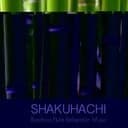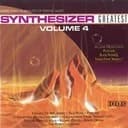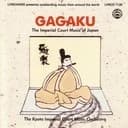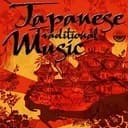Historical Origins and Cultural Significance
The In scale represents one of the fundamental pentatonic systems in traditional Japanese music, with roots extending back over a thousand years to ancient court music (gagaku) and Buddhist chant traditions. The name "In" (陰) translates to "shadow" or "yin," reflecting the scale's contemplative and introspective character within the Japanese philosophical framework of complementary forces. This scale structure, characterized by its distinctive intervals including a minor second (E-F) and the absence of a major third, creates the unmistakable sound associated with traditional Japanese instruments like the koto (thirteen-string zither) and shakuhachi (bamboo flute).
Throughout Japanese musical history, the In scale has been employed in various contexts, from Zen meditation music to theatrical performances in Noh and Kabuki drama. The scale's construction—with its pattern of half step, major third, whole step, minor second, and major third (H-W+W-W-H-W+W)—produces intervals that avoid the strong tonal centers found in Western major and minor scales, instead creating a floating, ambiguous tonal quality that encourages introspection and spiritual contemplation. This makes it fundamentally different from Western scales like the E Major, which establishes clear tonal hierarchies and resolution points.
Musical Character and Emotional Expression
The E In scale evokes a serene, mysterious atmosphere that immediately transports listeners to traditional Japanese landscapes—misty mountains, Zen gardens, and ancient temples. The scale's unique character stems from its interval structure, particularly the minor second between E and F, which creates a subtle tension that resolves unconventionally compared to Western harmonic expectations. This interval, combined with the absence of a major third and major seventh, eliminates the bright, triumphant quality of major scales while avoiding the melancholic darkness of minor scales, instead occupying a neutral, meditative sonic space.
When compared to other Japanese pentatonic scales, the In scale distinguishes itself through its specific emotional palette. While the E Hirajoshi scale shares some similarities in its Japanese character, it features different intervals that create a slightly more melancholic or nostalgic quality. The E In scale maintains a more balanced, contemplative mood that neither leans heavily toward sadness nor joy. Unlike the E Minor Pentatonic, which feels bluesy and expressive in Western music contexts, the In scale's intervallic relationships create an aesthetic that feels distinctly Eastern, with a focus on space, silence, and subtle tonal shifts rather than dramatic emotional expression.
Practical Applications
Contemporary composers have embraced the E In scale extensively in film scoring, particularly for scenes requiring an authentic Japanese atmosphere or contemplative mood. Renowned composers like Joe Hisaishi (Studio Ghibli films) and Nobuo Uematsu (Final Fantasy series) have utilized In and related Japanese scales to create memorable, culturally resonant soundtracks. The scale works exceptionally well over drone bass notes or sparse harmonic accompaniment, allowing its unique character to shine through without the need for complex chord progressions. Video game composers frequently employ the In scale for temple themes, meditation sequences, or character themes associated with Japanese culture or Eastern philosophy.
For improvisation and composition, the E In scale offers fascinating possibilities when used over various harmonic contexts. The scale works particularly well over sustained E minor or A minor chords, though its ambiguous tonal quality allows it to float above more experimental harmonic foundations. Composers can create authentic Japanese-inspired melodies by emphasizing the characteristic minor second movement (E-F) and utilizing techniques like portamento (sliding between pitches) and dynamic expression that mirror traditional shakuhachi performance practice. The scale also pairs interestingly with other pentatonic systems—try alternating between E In and D In or exploring parallel scales in different keys to create modulation effects while maintaining the Japanese aesthetic.
Learning Tips and Comparison to Related Scales
When learning the E In scale, begin by familiarizing yourself with its distinctive intervals through slow, deliberate practice. Focus particularly on the half-step movement between E and F, as this interval defines much of the scale's character. Practice ascending and descending patterns, then explore melodic phrases that emphasize different note combinations—try starting phrases on different scale degrees to discover the various moods available within this pentatonic system. Using a drone tone on E or A while practicing helps internalize the scale's relationship to tonal centers and develops your ear for its characteristic sound.
Comparing the E In scale to related scales deepens understanding of Japanese music theory and pentatonic systems. The E Hirajoshi scale (E-F-A-B♭-C) differs by only one note—it features B♭ instead of B natural—yet this creates a noticeably different emotional quality. The E Minor Pentatonic (E-G-A-B-D) shares the root note but creates an entirely different sound world rooted in Western blues and rock traditions. Exploring other In scale variants like C In helps recognize the scale's consistent intervallic pattern across different tonal centers, while examining broader scale relationships with E Major illuminates how Japanese pentatonic systems differ fundamentally from Western diatonic thinking in their approach to melody, harmony, and emotional expression.




